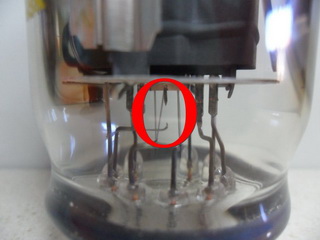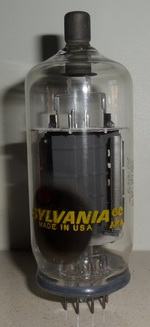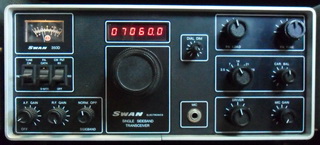



IRLP
Radio
Vintage





















Live Status
VK2YLD
Steve...
Kurri Kurri,
New South Wales
Australia
email - vk2yld at dodo.com.au
REAL radios glow without smoke.


--Another WARNING-- with proof!!
Take a look at the DVM.. This is after the power supply repair, and why I say "DANGER - HIGH VOLTAGE" and "Work One-Handed - Keep the other one in your pocket"
This is also why it is a good idea to do all the electrical tests BEFORE plugin, and reform or replace the main filter capacitors before you let this lot loose. If it flashes over... you get one massive bang.. The HT filter capacitors are 2x100uF in series giving 50uF with 850v sitting there... You work out the stored energy... (owch!)
And... If it flashes over through you...
THE END...





6LQ6 Datasheet
Swan 350D Manual
I have to admit, I have heard a lot of comments reguarding this rig as a "3drifty". Mine drifts about 6Khz from cold, but after about an hour the drift stops and the thing stays right where I put it. Before I cleaned the bandswitch, the thing did drift a bit, but that was due to a dodgy contact on the normal/opposite sideband switch.
If you have a set with drifting problems, the most common cause that I know of is the contacts on the bandswitch located inside the VFO cage. These contacts either get corroded, dirty or loose spring tension and that causes the VFO to drift. To check, tune to a signal or the calibrator marker (if not the 'D' model), and apply a little pressure to the bandswitch knob. If the signal shifts greatly (a little drift is normal), the contacts should be investigated. The only other thing I can think of is this tag was gained from people who don't use boat-anchors much and forget that they need time to warm up properly and with all-tube rigs that can take about an hour. Either way, this is a good rig to operate, and will get much use in the time to come as I rarely use modern gear anymore. My IC746Pro has been packed away for over a year now and I don't think I can see me pulling it out for a while yet (unless I want to go mobile without a crane!!)
Everything reassembled and ready for the real test. The receiver burst into life and the display even has all its segments working. Tuning around, various stations came in clear as a bell so I decided to have a go at the transmitter. I fitted a dummy load to the set and a microphone, and went to check the final bias before looking at the RF output, but there was no current. Nothing!! All the voltages checked out in the ballpark, even screen and grid, so why no current?? This set uses a single 6LQ6 in the final, so time to pull it and have a look. Just because there is light in there, still doesn't mean that anyones home! The picture at left shows the final and the closeup shows the fault.. (click fo larger image) The internal connection from the cathode assembly to the base pin has melted!, consequence of the blast mark on the socket me thinks. Re-thinking my previous thoughts, maybe she got a lightning hit, from antenna to chassis and out the mains switch.. Hmmm... A new final and things look a lot better. A last minute cleanup of the switches, pots and presets and the old swan flies again.. After a touchup of the alignment, good RF out, good modulation and real good receiver.
This radio was a score from, of all places, the local dump shop! My son grabbed it to re-use the metalwork for one of his projects. Luckily I caught him before it was rearranged!
Opening the lid, it looked like someone who didn't quite know what they were doing, 'attacked' it. Luckily all the valves were still there and all appeared to be in the right places. The power connector had been vandalised with some wires added and some broken. Below the chassis there was a couple of real surprises... Around the final socket was a big black blast mark, and another one behind the power switch.
I decided to test the switch first and surprisingly, it tested good so the wires were removed along with the multi-pin power connector. I replaced the power connector with an IEC socket from an old computer power supply, and rewired the mains switch, fuse and transformer primary. Next was a hi-pot test of the mains side and this proved to be good with no leakage up to 2Kv. Further investigation around both 'blast marks' seem to indicate a temporary short with either a stray piece of wire or misplaced screwdriver blade. No components appeared damaged. Lastly the valve heater wiring was repaired where someone appears to have tried converting the set to 6v valves and she's ready for the 'smoke' test.
I pulled the heater wire from the transformer to remove heater drain and stop HT load, then raised the mains voltage slowly via a vari-ac. I kept measuring the HT voltages and transformer current drawn by the filter caps (leakage current) as they reformed. That all that checked out ok too.
Restoring the Swan 350D




